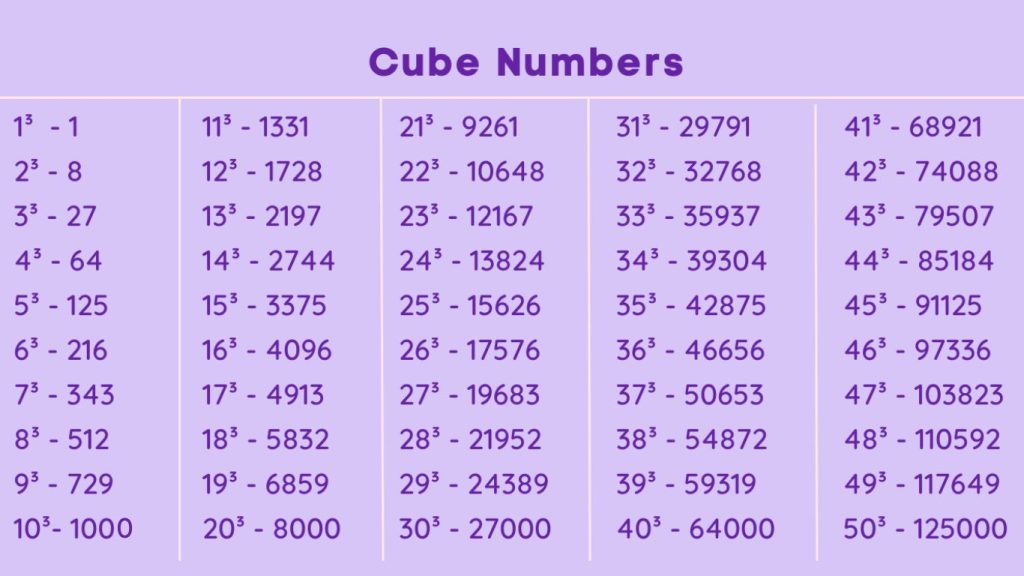Understanding Cube Numbers
Table of Contents
Introduction
Understanding Cube Numbers
Cube numbers are an essential concept in mathematics, providing insights into the properties of numbers and their applications in various fields. Let’s delve into the realm of cube numbers and explore their significance in mathematical contexts and real-world scenarios.
Analogy of Definition
What are Cube Numbers?
Cube numbers, also known as perfect cubes, are numbers that are the result of multiplying an integer by itself twice. In other words, if you take a whole number (like 2) and multiply it by itself and then multiply the result by the original number again, you get a cube number.
For example:
- 1 × 1 × 1 = 1
- 2 × 2 × 2 = 8
- 3 × 3 × 3 = 27
- 4 × 4 × 4 = 64
So, 1, 8, 27, and 64 are all cube numbers.

Examples

Quiz
Tips and Tricks
1. Recognize Patterns
Tip: Cube numbers follow a specific pattern. For example, the cubes of numbers 1 through 10 are 1, 8, 27, 64, 125, 216, 343, 512, 729, and 1000. Familiarizing yourself with these can help identify cube numbers quickly.
2. Finding Cube Roots
Tip: To find the cube root of a cube number, look for a number that, when multiplied by itself twice, gives the original number. For instance, the cube root of 27 is 3 because 3 × 3 × 3 = 27.
3. Identifying Cube Numbers
Tip: If the units digit of a number is not 0, 1, 4, 5, 6, or 9, then it is not a cube number. For example, 11 cannot be a cube number because its units digit is 1.
4. Breaking Down Larger Numbers
Tip: To check if a large number is a cube, break it down into prime factors. If each prime factor’s exponent is a multiple of 3, the number is a cube. For example, 216=23×33216 = 2^3 \times 3^3216=23×33, so it is a cube.
Real life application
Story: The Cube Number Challenge
A group of students embarked on a challenge to identify cube numbers in everyday objects and scenarios, discovering their practical significance.\
Challenge 1: The Box Volume Puzzle
The students encountered a series of boxes with varying dimensions and were tasked with calculating their volumes. By applying the concept of cube numbers, they efficiently determined the volumes of the boxes, gaining insights into the importance of cube numbers in measuring three-dimensional objects.
Challenge 2: The Architect’s Blueprint
In another challenge, the students analyzed architectural blueprints and engineering designs, recognizing the use of cube numbers in calculating volumes, dimensions, and spatial arrangements. They realized the critical role of cube numbers in translating designs into physical structures.
Challenge 3: The Scientific Experiment
The final challenge involved conducting scientific experiments that required precise measurements and calculations. By leveraging cube numbers, the students accurately determined volumes, densities, and spatial relationships, showcasing the practical applications of cube numbers in scientific endeavors.
FAQ's
Like? Share it with your friends







